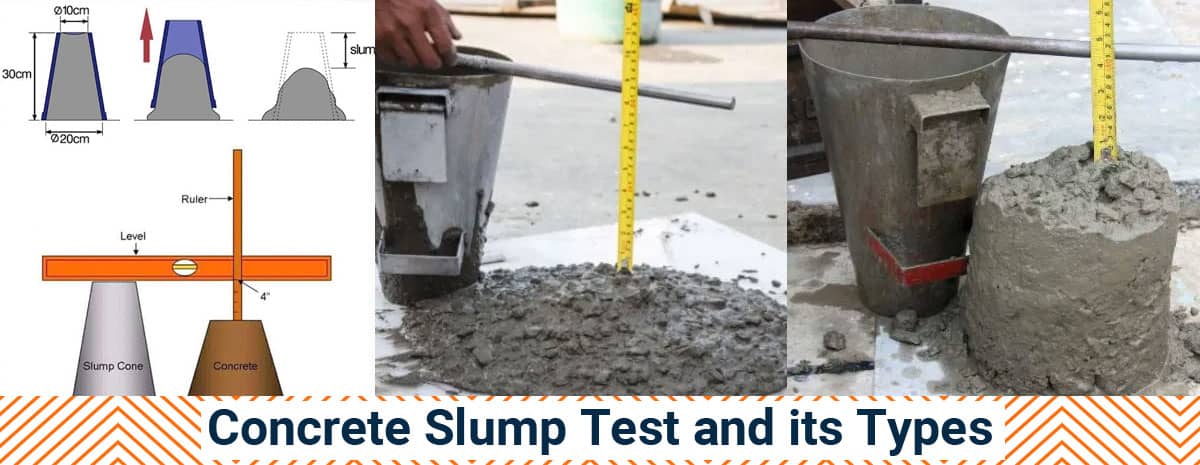Slump Test of Concrete and its Types
What Is Slump Test?
Slump test is that the commonest , easy, and straightforward test wont to measure the workability of fresh concrete. This test is performed to see the workability or consistency of freshly mixed concrete during a specific batch.
Workability means how easily the concrete are often mixed, handled, transported, placed in position, and compacted.
There are two other tests wont to measure the workability of concrete; Compaction factor test and Vee-Bee test. Slump test is additionally referred to as slump cone test as a cone is employed within the test.
This test is completed at construction site before the concreting process. The slump test gives satisfactory results for the concrete mixture of medium to high workability and unfortunately, it doesn't give the right indication of low workability, which can give zero slumps.
Procedure Of Slump Test (Step By Step)
- First, clean the inner surface of the empty mould then apply oil thereto.
- Set the mould on a horizontal non-porous and non-absorbent base plate.
- Fill the mould fully by pouring freshly mixed concrete into three equal layers.
- Stroke each layer 25 times with the quality tamping rod over the cross-section.
- After stroking 25 times the highest layer is struck off level, now lift the mould slowly within the vertical direction without disturbing the concrete cone.
- Use the measuring scale to live the difference level between the peak of the mould and therefore the concrete sample.
- The subsidence of concrete is understood because the slump and therefore the value of slump is measured in mm.
Types of Slump Test
True Slump: The concrete mass after the test when slumps evenly all around without disintegration is named truth slump.
Shear Slump: When one-half of the concrete mass slump the opposite is named the shear slump. this sort of slump is obtained during a lean concrete mix.
Collapse Slump: When the sample is collapsed thanks to adding excessive water, it's referred to as collapse slump.
Zero Slump: For very stiff or dry mixes it doesn't show any changes within the slump after removing the slump cone.
Advantages Of Slump Test:
- The procedure of slump test is straightforward and straightforward than the other workability test.
- It requires inexpensive and portable apparatus.
- Slump test are often performed at the development site also as within the laboratory.

